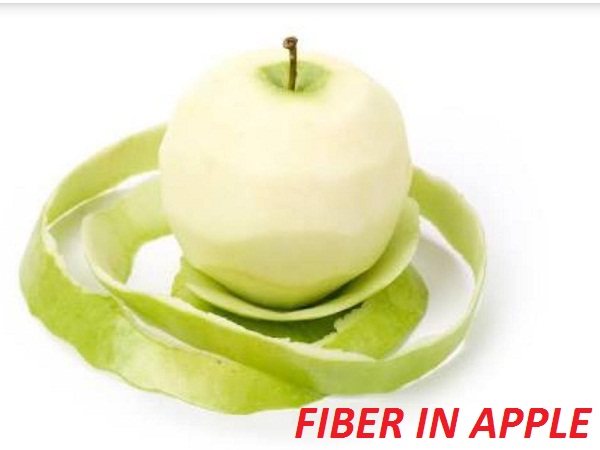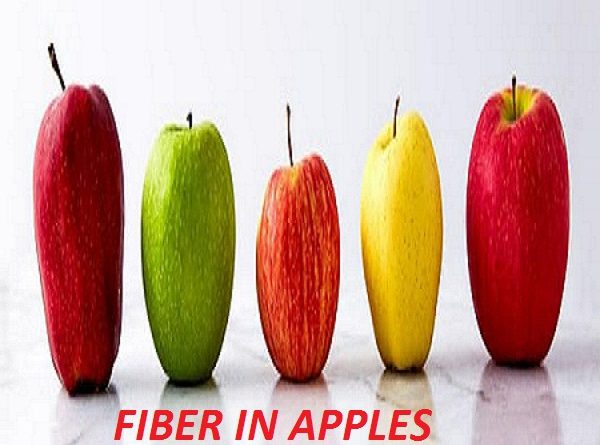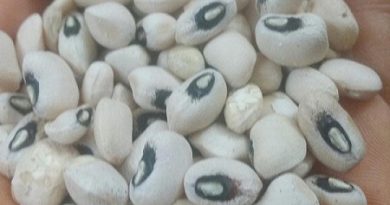Fiber in Apple – Why You Should Never Peel Apple Skin
Fiber in apple is high with low calories and perfect for human consumption. To reap the benefits of fiber in apples, you must eat the whole apple – skin (or apple peel) and all.
An apple is a round fleshy pome fruit with red, yellow or green skin and a whitish inside. It is produced by an apple tree (genus Malus) of the rose family. Apples are high in fiber and often referred to as the nutritional powerhouse fruit.
Dietary fiber is a plant-based nutrient that is sometimes referred to as roughage or bulk. It is a type of carbohydrate however, unlike other carbs; it cannot be broken down into digestible sugar molecules. Hence, fiber passes through the intestinal tract relatively intact.
According to Paige Smathers, an Utah-based dietitian: fiber is important to digestion and regularity, blood sugar regulation, weight management, cholesterol maintenance and more, It has also been linked to longevity and decreasing the risk of cancer.
Now we know about fiber benefits but, do we know exactly how much fiber in an apple?
Fibers in Apples-How many grams of fiber in an apple?
Grams of fiber in an apple with the skin is approximately 4.4 grams or 17 percent of your daily dietary fiber needs. Without the skin, you are only getting 2.1 grams, (that is 3 grams cutoff).
An apple with the skin is a high source of dietary fiber, and therefore a fiber-rich food.
Fiber in Apple – Why You Should Never Peel an Apple

To reap the benefits of fiber in apples, you must eat the whole apple – skin (or apple peel) and all.
- That’s because Apple skin contains quercetin that helps protect memory, as well as with breathing problems.
- Apple skin also contains most of the vitamins. That same medium apple with skin contains 8.4 milligrams of vitamin C and 98 international units (IU) of vitamin A. Remove the skin and that falls to 6.4 milligrams of vitamin C and 61 IU of vitamin A.
- Apple fruits above all are high in pectin, a type of soluble fiber. While pectin is found in both the skin and the flesh of an apple, its highest concentrations reside in the skin.
There are two main types of dietary fiber: soluble fiber and insoluble fiber. Apples have soluble fiber, meaning that they attract water and turns to gel during digestion.
Soluble fiber is so helpful to the body! It is not well-absorbed, so it can assist to reduce blood cholesterol and blood glucose levels. It slows digestion down and can make you feel fuller, longer.
In addition to apples, beans, blueberries, oats, peas, and barley are all great sources for soluble fiber.
Insoluble fiber upsurges stool bulk and assists in moving materials through your digestive system. It’s a big benefit to those with irregular bowel movements.
It can be found in a variety of foods, from whole wheat flour and bran to nuts, and vegetables like cauliflower, green beans, and potatoes.
How Many Apples Do You Need To Eat Every Day?
The Institute of Medicine has set a recommended daily amount (RDA) for fiber intake. Men ages 50 and younger should consume 38 grams of fiber per day, and men 51 and older should consume 30 grams.
Women ages 50 and younger should consume 25 grams per day, while their older counterparts should have 21 grams.
When Juicing An Apple Do You Leave The Skin On?
Taste, nutrition and personal preference are the three main considerations for deciding whether or not to skin your apples.
Apple sauce made from skinned apples typically contains fewer amounts of vitamin C and dietary fiber, two essential parts of a balanced diet.




Pingback: Green Apple Smoothie for Weight Loss in Nigeria - 9jafoods
Pingback: Best Apple Crumble Recipe: Quick & Easy - 9jafoods